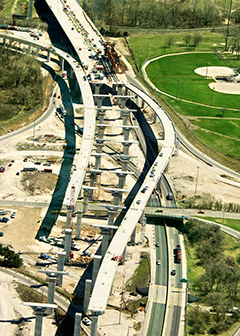
Civil engineers typically need a bachelor’s degree in civil engineering or a related field.
Civil engineers typically need a bachelor’s degree in civil engineering or a related field. Although licensure requirements vary by state, civil engineers usually must be licensed if they provide services directly to the public.
Education
Civil engineers typically need a bachelor's degree in civil engineering or a related field. Civil engineering programs include coursework in math, physics, engineering mechanics, and construction systems. Courses may include a mix of academic learning and laboratory work.
Employers usually prefer to hire graduates of accredited civil engineering programs. Some students attend schools that have cooperative-education programs (also known as co-ops); others participate in internships. Co-ops and internships provide students with an opportunity to gain practical experience while pursuing a degree.
Licenses, Certifications, and Registrations
Licensure is not required for entry-level civil engineers. However, civil engineers typically must be licensed if they provide services directly to the public. Engineers who have a Professional Engineer (PE) license are called professional engineers (PEs).
A PE may oversee the work of other engineers, approve design plans, sign off on projects, and provide services directly to the public. State licensure generally requires a bachelor’s or higher degree from an accredited engineering program, a passing score on the Fundamentals of Engineering (FE) exam, several years of relevant work experience, and a passing score on the PE exam.
Each state issues its own licenses. Most states recognize licensure from other states, as long as the licensing state’s requirements meet or exceed their own licensure requirements. Some states require continuing education for engineers to keep their licenses. Information on state licensing board requirements is available from CareerOneStop.
Optional certification may demonstrate a level of competence and experience that make candidates attractive to prospective employers. Information on certifications is available from CareerOneStop.
Advancement
With experience, some PEs advance to supervisory or administrative positions. Their responsibilities may focus on a specific project, such as a construction site, or encompass broad oversight, such as in working as a city engineer, public works director, or city manager.
Graduate-level education, along with a PE license and experience, may be helpful for advancing into supervisory positions, such as engineering managers.
PEs who have certification that demonstrates expertise in a civil engineering specialty also may be able to advance into senior technical or managerial positions.
Important Qualities
The following are examples of qualities that are important for these workers to perform their duties. For more information, visit the Employment Projections (EP) skills data page.
Communication skills. Civil engineers must be able to explain, both orally and in writing, the details of their projects. They may need to convey information to a variety of audiences, including nontechnical ones.
Decision-making skills. Civil engineers must be able to balance a variety of objectives, such as the feasibility of plans against cost and safety.
Interpersonal skills. Civil engineers often manage projects and the teams that work on them. They must be able to lead urban planners, surveyors, civil engineering technicians, and others.
Math skills. Civil engineers use calculus, trigonometry, and other mathematics for analysis, design, and troubleshooting.
Organizational skills. Civil engineers often oversee several projects at the same time and must be able to allocate resources effectively.
Problem-solving skills. Civil engineers may encounter problems during each stage of their work. They must be able to evaluate issues that arise and troubleshoot to find solutions.
 United States Department of Labor
United States Department of Labor











